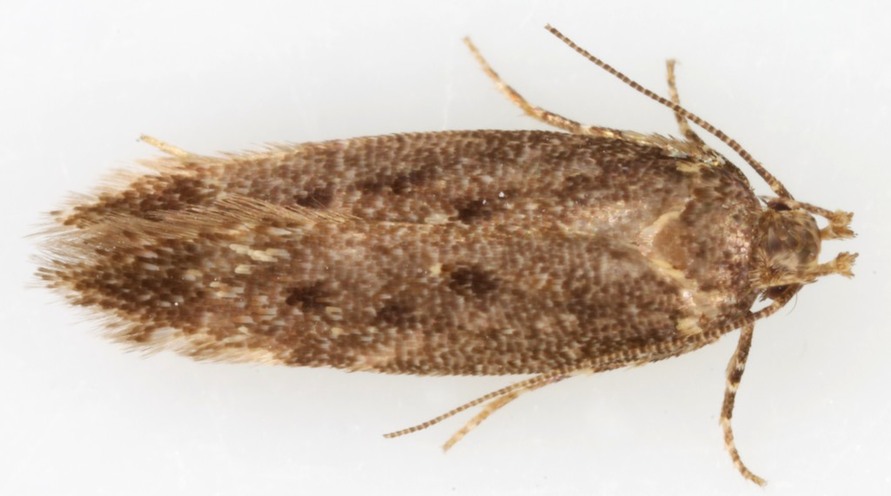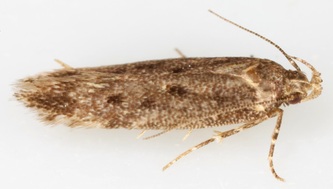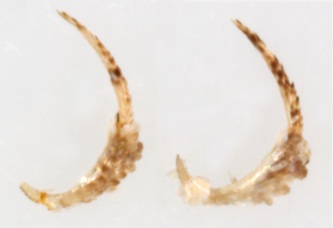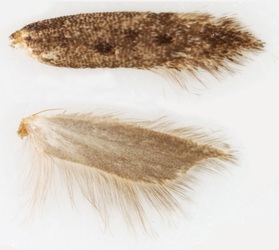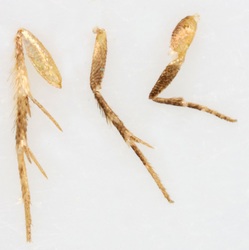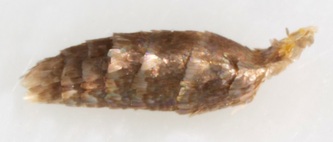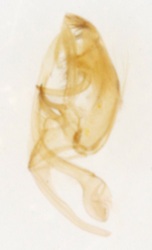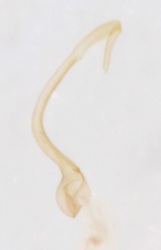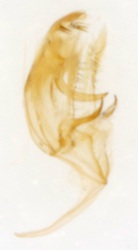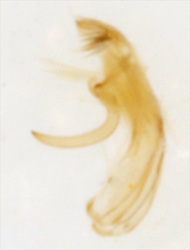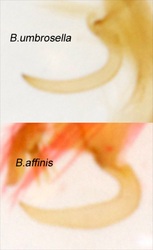35.048 Bryotropha umbrosella (Sandhill Moss-moth)
ws 9.5-11.5mm; May-Aug; local on coastal sand-dunes
The provenance of specimen §1 is slightly in doubt. I obtained a gelechiid on a camping trip to Repps in the Norfolk Broad (near Potter Heigham) about 8km from the coastal sand dunes at Winterton. On taking it home for processing it escaped before any photos were taken. 3 days later I found this specimen in my kitchen in Westcliff-on-sea, Essex (a long way from any coastal sand-dunes), I am assuming that this is the escaped Norfolk moth.
The provenance of specimen §1 is slightly in doubt. I obtained a gelechiid on a camping trip to Repps in the Norfolk Broad (near Potter Heigham) about 8km from the coastal sand dunes at Winterton. On taking it home for processing it escaped before any photos were taken. 3 days later I found this specimen in my kitchen in Westcliff-on-sea, Essex (a long way from any coastal sand-dunes), I am assuming that this is the escaped Norfolk moth.
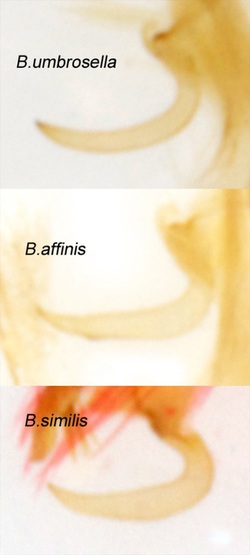
ID: External Features - This species is not reliably identifiable on external features. The key in MBGBI4.2 and my key on the Anomologinae page narrows it down by: Labial palp S3 longer than S2, S2 with conspicuous furrowed brush; ws 9-13mm. The key in MBGBI4.2 then excludes B.basaltinella and B.dryadella as these have the first discal stigma in line with the plical stigma rather than distal to it. Further identification to B.umbrosella then requires a decision that the fw ground colour is either clear grey, whitish or blackish but not whitish-brown, ochreous, light or dark brown! B.affinis is most similar - B.umbrosella is said to differ in having pale white rather than yellowish cluster of scales beyond plical stigma, costal and tornal patches; costal and tornal patches in B.affinis are usually fused to form a fascia which is seldom seen in B.umbrosella and fw ground colour in B.umbrosella is without the pale irroration of B.affinis.
B.similis lacks conspicuous pale scales beyond the plical stigma, but may appear otherwise very similar (and in specimen §1 the patch beyond the plical stigma is inconspicuous).
Male Genitalia: Aedeagus with whip-like apex; sacculus present; (base of gnathos and surface of vinculum without microtrichia); gnathos slender - at least 3x as long as wide, of even width and evenly curved.
The key in MBGBI4.2 also refers to the number of spikes on the thornshield (up to 20 in B.umbrosella and up to 40 in B.affinis) but this feature seems to require higher powered microscopy than is available to me - as does the presence or absence of microtrichia at base of gnathos. The 4 species that show microtrichia are easily excluded as 2 of them (galbanella and boreella) lack a furrowed brush on labial palp S2 and the the other two (terrella and desertella) have a very distinctive gnathos.
B.similis lacks conspicuous pale scales beyond the plical stigma, but may appear otherwise very similar (and in specimen §1 the patch beyond the plical stigma is inconspicuous).
Male Genitalia: Aedeagus with whip-like apex; sacculus present; (base of gnathos and surface of vinculum without microtrichia); gnathos slender - at least 3x as long as wide, of even width and evenly curved.
The key in MBGBI4.2 also refers to the number of spikes on the thornshield (up to 20 in B.umbrosella and up to 40 in B.affinis) but this feature seems to require higher powered microscopy than is available to me - as does the presence or absence of microtrichia at base of gnathos. The 4 species that show microtrichia are easily excluded as 2 of them (galbanella and boreella) lack a furrowed brush on labial palp S2 and the the other two (terrella and desertella) have a very distinctive gnathos.
Dissection
Male genitalia
§1 Repps, Norfolk; 21/08/2011; male; fw 5.2mm
All images © Chris Lewis
All images © Chris Lewis
Page published October 2011 (§1)
